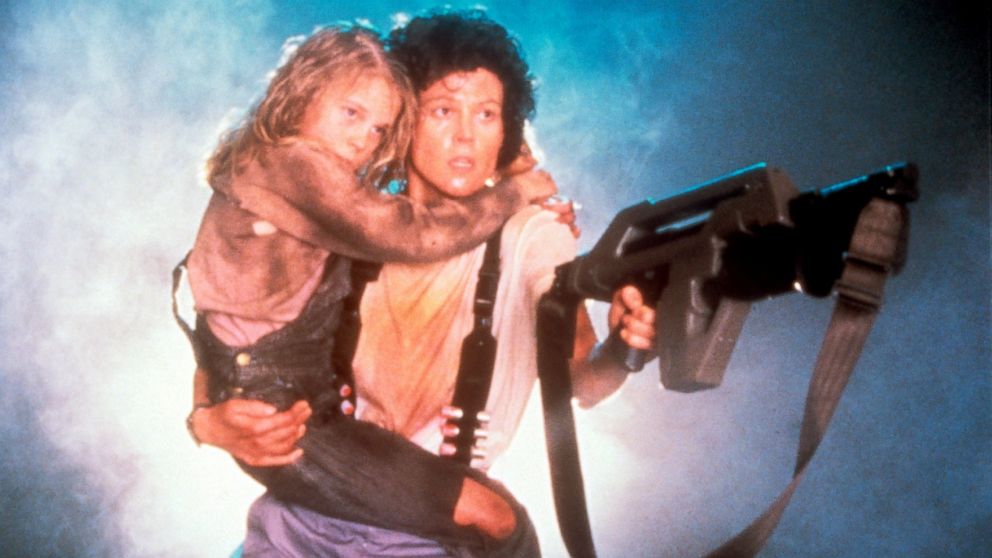'Aliens' Turns 30: 8 Secrets From the Set Revealed
The Sigourney Weaver movie hit theaters 30 years ago today.

— -- Thirty years ago today, "Aliens," the much-anticipated sequel to the 1979 hit, "Alien," hit theaters.
However, according to writer/director James Cameron, most people at that time tried to convince him not to make the movie.
After all, they reasoned, any positive elements of the film would be attributed to "Alien" director Ridley Scott, and all the negative parts would be viewed as Cameron's fault.
"I said, 'Yeah, but I really want to do it. It'll be cool,'" he said in an interview. "It was like this ridiculous, stupid thing. It wasn't strategic at all, but I knew it would be cool."
Audiences certainly agreed. According to Box Office Mojo, the film grossed $85,160,248 domestically, and $131,060,248 total. It was a hit with Hollywood insiders too, and went on to earn seven Oscar nominations, including a Best Actress nod for Sigourney Weaver. In the end, it won two, for Best Sound Editing and Best Visual Effects.
Still, the success of "Aliens" was hard-earned. Here are a few secrets from the set of the 1986 movie.
2. She practiced with the guns every day at sundown: Weaver said in the 1986 interview that she carried three guns in the movie: a flame thrower, a submachine gun, and a grenade launcher. To make sure she was proficient with each, she had regular shooting practice at sunset. "The only hard part, really, was the guns were extremely heavy," she said. "You always were alternating the guns so [you have] to be sure you didn't pull the wrong trigger and ignite the stuntman by mistake. So even the play guns are very dangerous and I have a very healthy respect for them."
3. Weaver was involved behind the scenes too: "Aliens" focuses on Ripley, so it was important to get Weaver, who originated the role in "Alien," on-board. Cameron said in a documentary of the film the actress was positive about the script when she first read it, but she helped him make tweaks too. "I took her input on how she would react, she speaking as Ripley: 'I wouldn't do that. I would do this.' 'Wouldn't I be a little more angry here or softer there?' That sort of thing," he explained.
4. The Sulaco design changed dramatically: Syd Mead, the conceptual artist who sketched the Sulaco spaceship where much of the movie is based, came onto the project at the start of production at Pinewood Studios. Originally, he designed it as "a huge sphere with antennas." "Cameron says, 'Syd, this has to move past camera, and we don't want to pull focus. It has to be flatter.' That established the slab-like format for the Sulaco,'" he said in an interview with Vulture. Around that time, Mead also began sketching ideas for the power loader. "They constructed the test model with 2x2s and trash bags stuffed with newspapers to get the articulation down," he explained. "The finished prop was so cumbersome, they had to have guys in black skin suits running it. It was not power operated, it was operated by manipulators behind out of shot."
5. Aliens were played by dancers, stuntmen and mannequins: Dancers and stuntmen wore lightweight suits that allowed them to fly around quickly, and 12 eight-foot tall mannequins were used when a body needed to be contorted into inhumane poses. However, "if we wanted something that looked really violent, we would hang up a dummy alien, sort of puppet control it and literally blow the hell out of it," special effects supervisor John Richardson said in the documentary. "They were the good ones because you could really go to town on those and you could blow arms and legs and heads off." To create an acid/smoke effect, Richardson said they combined titanium tetrachloride, cyclohexylamine and acetic acid, along with yellow dye.
6. The British crew and Cameron clashed: At Pinewood Studios in England, a woman with a tea cart tended to interrupt filming, which frustrated Cameron. Actor Bill Paxton said in the documentary that while the British crew's work was "second to none," their attitude toward work was "much more laid back" than the Americans'. "There was a tremendous time constraint and budget constraints to make this movie work," he continued. "Jim was pressed to just squeeze every moment he could to get another shot."
7. A doll was made of Newt: In several scenes, Ripley carried around a young girl named Newt, played by actress Carrie Henn. However, the weight of a child in addition to weaponry proved to be too much for Weaver at times, so a lookalike model of Henn was created for production. "I had to do a full body cast. I had a double who was about the same size as me and I think they did her legs, but I had to do the body part and the face part," Henn explained in the documentary. "It was really cool in the end to see how much this dummy did look like me."
8. Weaver had a maternal role on set: "We had a lot of young actors who were really gung-ho and I was a more seasoned performer since 'Alien;' by that time I had much more experience and confidence," Weaver told Moviefone in 2011. "There were a lot of deaths and I gave a bouquet to each character the day they were killed; it was like 'Oh that's your day today! You get killed today!' It was fun giving Paul Reiser his bouquet, I just gave him a bunch of dead flowers." She also gave an engraved picture frame to Henn after production ended. "I have a really nice picture of us and I have it in my room," she said in the documentary. "She was almost like a surrogate mom I guess."




